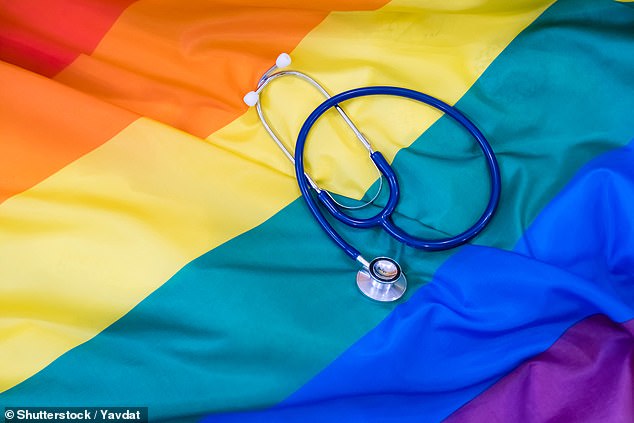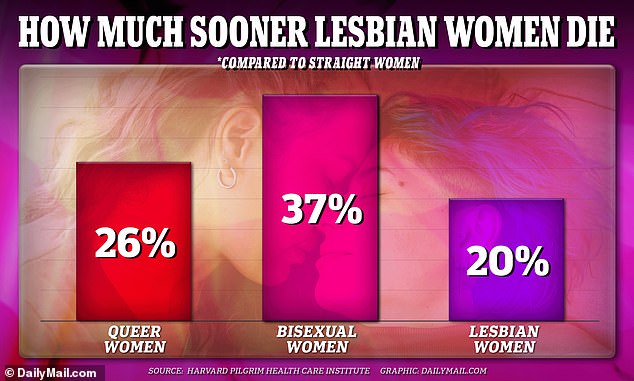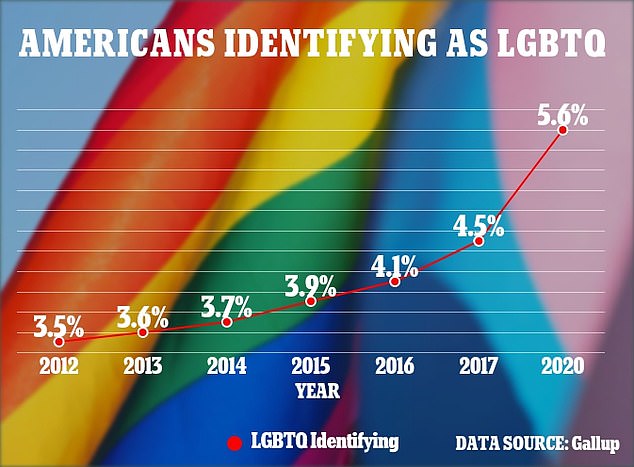How your sexual preference can raise your chance of multiple CANCERS, according to first-of-its-kind report
Research shows that LGBTQ+ people are at greater risk of some forms of cancer than heterosexuals.
A first-of-its-kind report from the American Cancer Society shows that lesbian, gay, bisexual and transgender people are more likely to smoke, drink alcohol and be obese, all of which increase their risk of developing cancer.
They are also at greater risk of STDs such as HIV and HPV, which can lead to cancer, the report said.
The analysis found they are also more likely to avoid going to the doctor due to fear of discrimination, which could lead to delays in cancer diagnosis.
Dr. William Dahut, chief scientific officer of the American Cancer Society, said in an interview with ABC News, “We are very aware in this population of the hesitancy to receive health care. Because of prejudice, because of the lack of [physician] notoriety…we were concerned that the outcomes could be even worse.”
A first-of-its-kind report from the American Cancer Society shows that LGBTQ+ people are more likely to smoke, drink alcohol and be obese, all of which increase their risk of developing cancer.

LGBTQ+ groups are also more likely to avoid going to the doctor due to fear of discrimination, which could lead to delays in cancer diagnosis
The analysis summarizes data collected from three major national surveys: the National Health Interview Survey, the Behavioral Risk Factor Surveillance System, and the National Youth Tobacco Survey.
It found that lesbian, gay and bisexual adults are more likely to smoke cigarettes than heterosexual adults (16 percent compared to 12 percent in 2021 and 2022).
The biggest difference was among bisexual women, who are twice as likely as heterosexual women to smoke cigarettes (23 percent versus 10 percent) and to drink heavily (14 percent versus six percent).
Cigarette smoke contains more than 5,000 chemicals, at least 70 of which can cause cancer.
When smoking, the chemicals enter the lungs and damage DNA in the body, including parts of our DNA that protect us against cancer.
Smoking not only increases the risk of lung cancer, but also of cancer of the mouth and throat, larynx, esophagus, stomach, kidneys, pancreas, liver, bladder, cervix, colon and rectum, and also a form of leukemia.
‘Minority stress’ – the excessive stress experienced by members of stigmatized groups likely contributes to behaviors such as smoking that increase cancer risk, the researchers said.
Psychological stress can also cause elevated cortisol levels and chronic inflammation, which likely increase cancer risk, the researchers said.
Although the researchers did not look directly at cancer rates in LGBTQ+ people, they concluded that rates are likely to be higher due to the increased prevalence of risk factors such as smoking, drinking and being overweight.

A separate study found that bisexual women had the shortest life expectancy and died 37 percent earlier than heterosexual women, followed by lesbian women, who died 20 percent earlier. Queer women (including both bisexual and lesbian women) died on average 26 percent earlier than straight women

An estimated 5.6 percent of all Americans identified as LGBTQ in 2020
Lesbian and bisexual women are more likely to be overweight; 68 percent carry extra weight, compared to 61 percent of heterosexual women.
Bisexual women also tend to drink more. About 14 percent drink more than seven drinks a week, while only six percent of heterosexual women drink that much.
Obesity is also more common among bisexual women: 43 percent compared to 38 percent among lesbian women and 33 percent among heterosexual women.
Having too much body fat can increase the levels of growth hormones in the body, which triggers cells to divide more often and increases the likelihood that cancer cells will develop.
Obesity also causes inflammation in the body, which causes cells to divide more quickly.
The prevalence of cancer-causing infections such as human immunodeficiency virus (HIV), human papillomavirus (HPV), and hepatitis C virus (HCV) is also significantly higher in some LGBTQ+ groups.
According to the CDC, about 70 percent of HIV infections are due to sexual contact between men.
HIV-infected individuals are at higher risk for at least ten cancers, including non-Hodgkin’s lymphoma, liver cancer, and cervical cancer.
This is because HIV weakens the immune system and allows other viruses to grow that can cause cancer.
Screening rates for some cancers are lower in LGBTQ+ groups, including cervical and colorectal cancer screening in transgender men.
The researchers said that while the findings indicate disparities in cancer incidence among LGBTQ+ people, actual data on this and mortality rates for the population are not available because sexual orientation and gender identity are not well collected in health care settings.
One study included in the analysis found a 10 percent higher risk of breast cancer among bisexual women and a six percent higher risk among lesbians, compared to heterosexual women.
The research was published in the journal Cancer.
